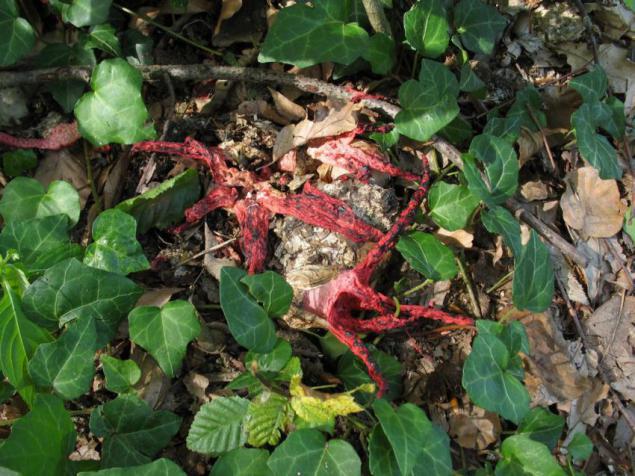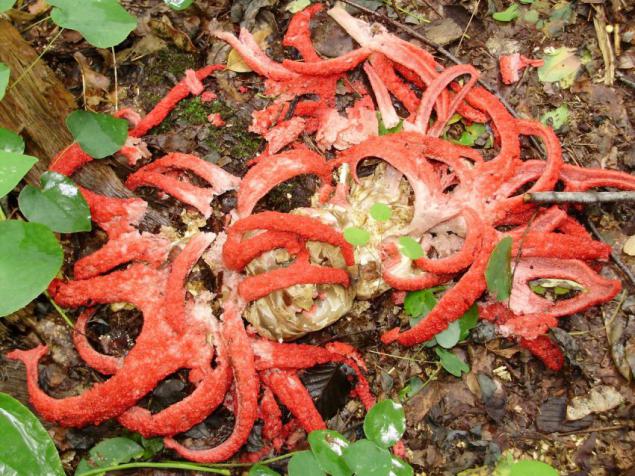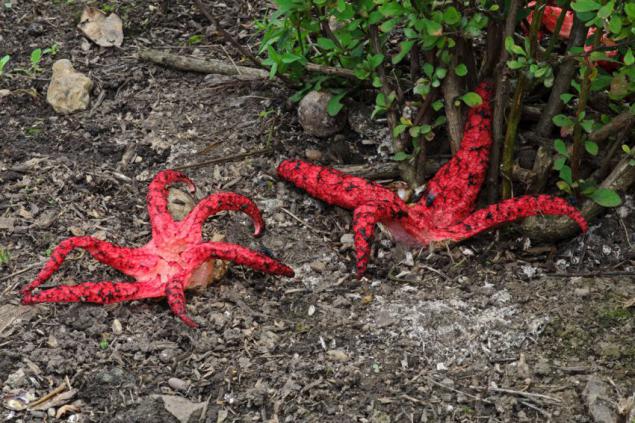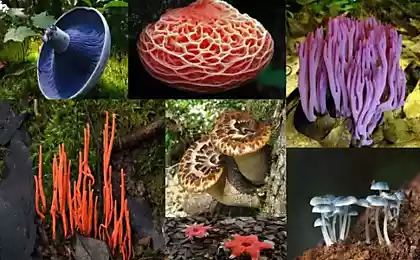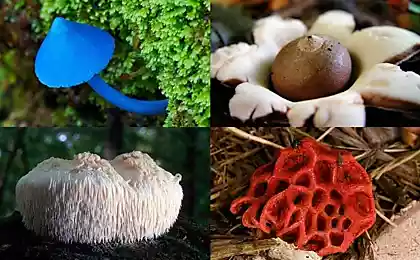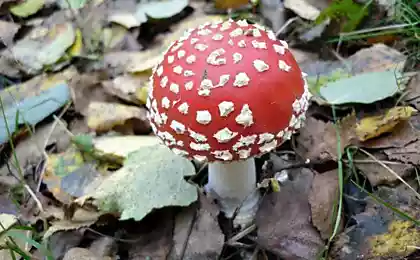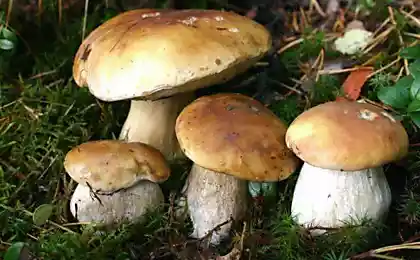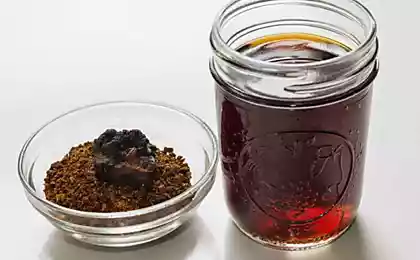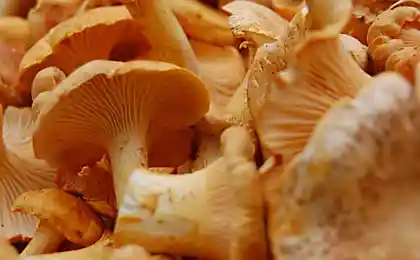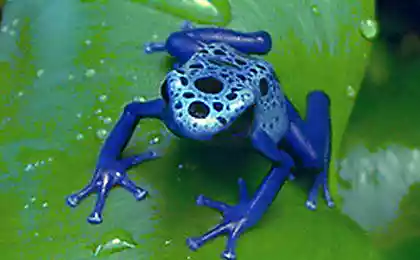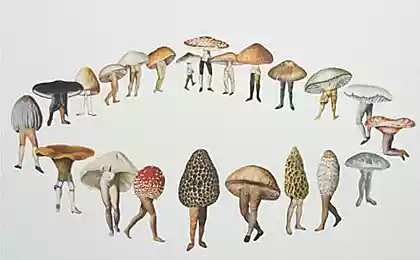1327
Mushroom-octopus

That's how it all starts ...
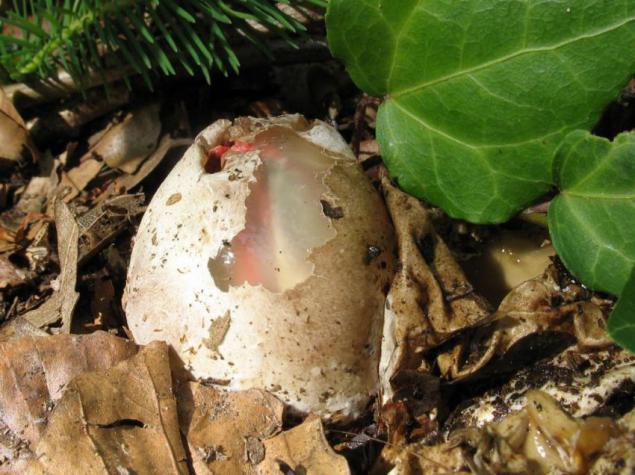
In principle, this fungus is not toxic, but hardly anyone dares to try them on taste. From it emanates a fragrance that when you try to cram them into his mouth, you most likely just fainted.
The fungus is hitryuschie creature and at the beginning of his life he pretend Below whitish toadstools. After a while, these Crafty begin to bud.
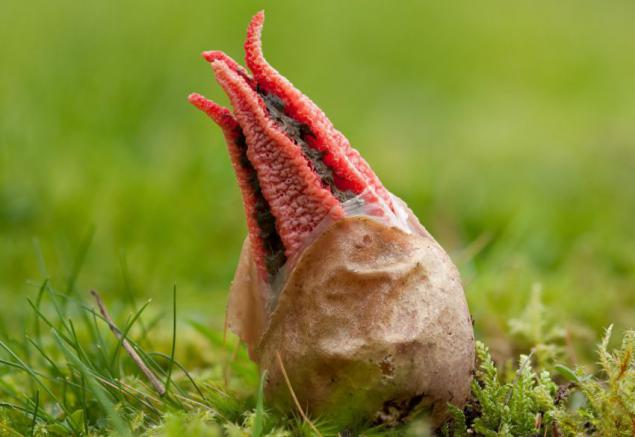
The process of transformation into a terrible monster is just a couple of months: during this period pileus divided into 4-5 pieces, forming a kind of petals. The stench is not only a defense mechanism of the gourmets who want to try new taste sensations, but bait for the flies, which are the main carriers of spores of these fungi.
Other names stinking horns octopus: Clathrus archeri.

Young fruit body 4 - 6 cm. In diameter, ovoid or pear-shaped, with long filamentous strands at the base. Peridium whitish or grayish, with a pink and brown tint, after the break is at the base of the fruiting body. Because of a broken egg shell rapidly evolving retseptakul a 3-8 Reds first fused to the top, then quickly divide and spread out like tentacles, the blades. Subsequently, the fungus takes a characteristic star-shaped, resembling a flower diameter of about 10 - 15 cm. The apparent at the feet of this fungus is not. The inner surface of the blade structure resembles porous, wrinkled lip, covered with dark irregular patches of olive, mucous, Sporiferous Gleb, give off a strong unpleasant odor that attracts insects.
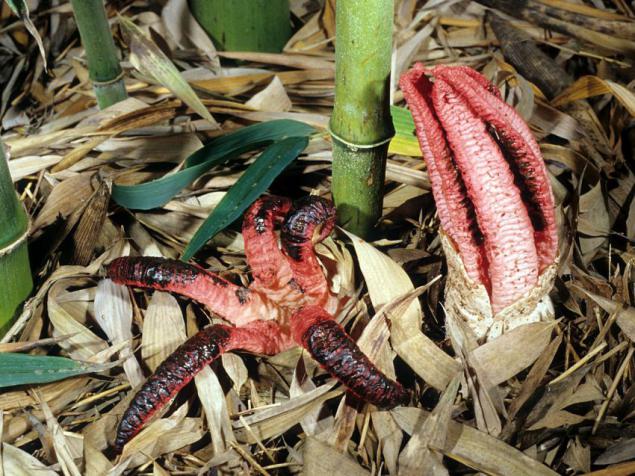
In the context of the fungus in the egg stage, it is easily visible layer structure: the top peridium, under which is the mucous membrane, resembling jelly. Together they protect the fruiting body from external influences. Below them are located the nucleus consisting of retseptakula red, ie future blades "flower", and in the heart of visible Hleb, ie spore-bearing layer of olive green. The flesh has bloomed blades are very brittle.
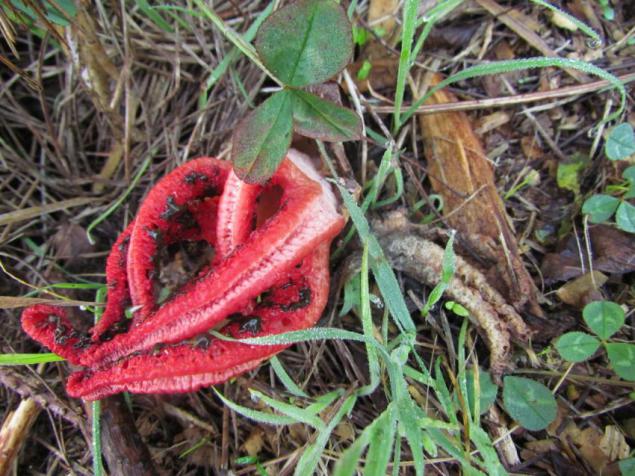
It grows from July to October on the basis of deciduous and mixed forests, is found in meadows and parks, as marked on the sand dunes. Saprophyte. Rare, but under good conditions grows in large quantities.

Mushroom kind, not like the others, but there are similar kinds:
Tsvetohvostnik Javanese (Pseudocolus fusiformis syn. Anthurus javanicus), characterized by converging to the top of the blades, which is noted in the Primorsky Territory, as well as in tubs with tropical plants, particularly in the Nikitsky botanical garden. And very rarely encountered, Reshetochnik red (Clathrus ruber).
At a young age, in the egg stage can be confused with Veselka ordinary (Phallus impudicus), which differs in green flesh on the cut.
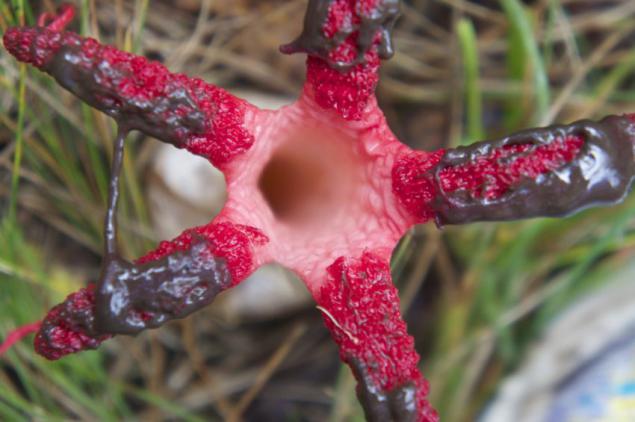
History of penetration: The ancestor of the fungus is considered to be Australia, and in Europe it is - an alien. It was first discovered in France in 1914, perhaps his arguments were brought together with the hair, which at the time imported from Australia. Subsequently, the fungus began to find in southern Germany (1937), Switzerland (1942), England (1945), Austria (1948), in the Czech Republic (1963), in Spain (1973). The shores of the Baltic Sea, he was getting more than 60 years, and today it is increasingly concentrated in the Eastern European continent.
Etymology: Clathrus (m) of kleithron Greek. [Saccardo, P.A. Sylloge Fungorum VII: 18 (1888)] with a similar value of claustrum armor. 1) The bolt lock; 2) storage cell. Also kleis Greek. bolt lock. Pinea claustra - Pine prison - Virgil wrote about the Trojan horse. Archeridan epithet in honor of the Irish mycologist William Archer.


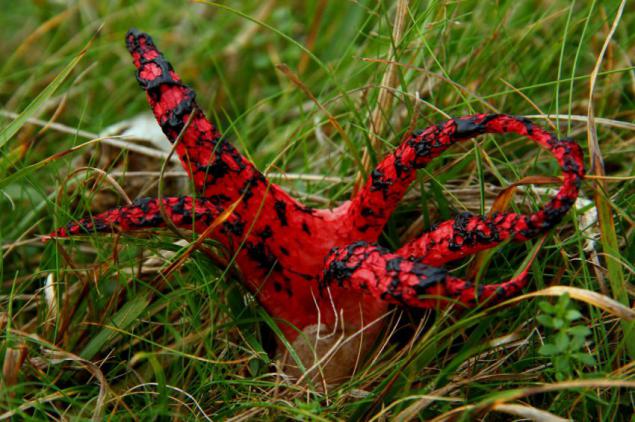
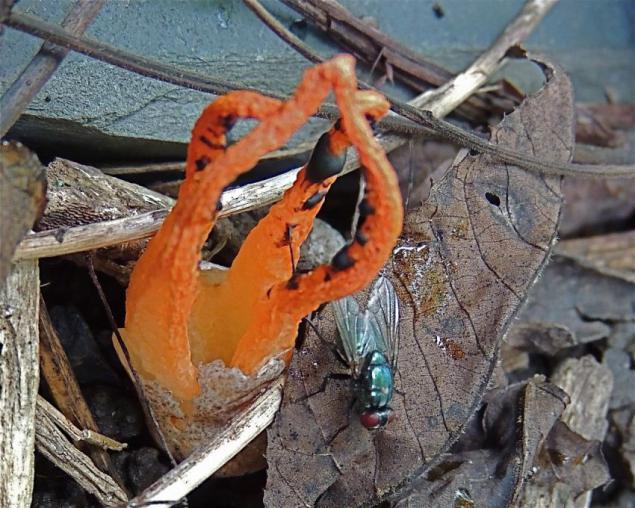

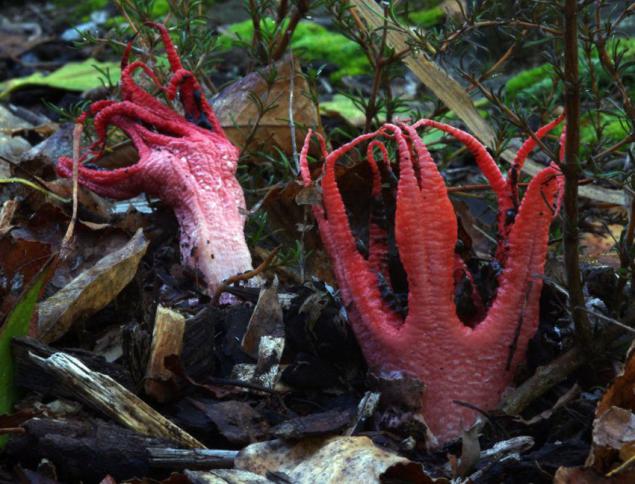
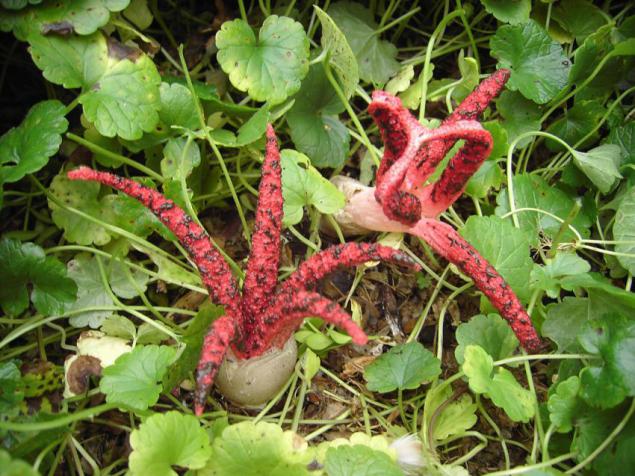
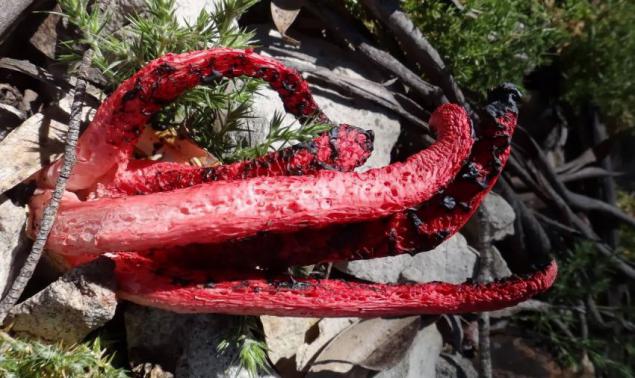
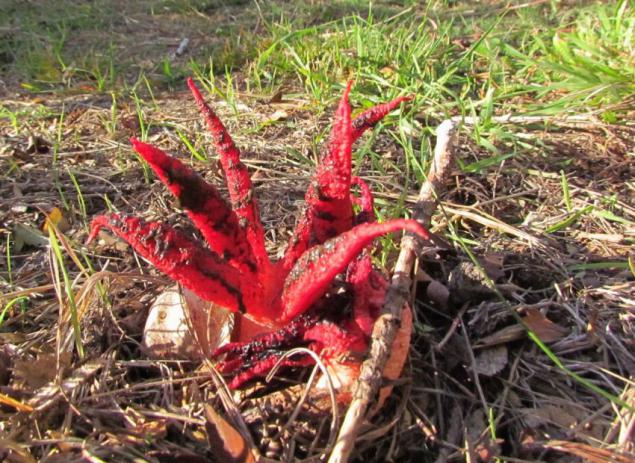
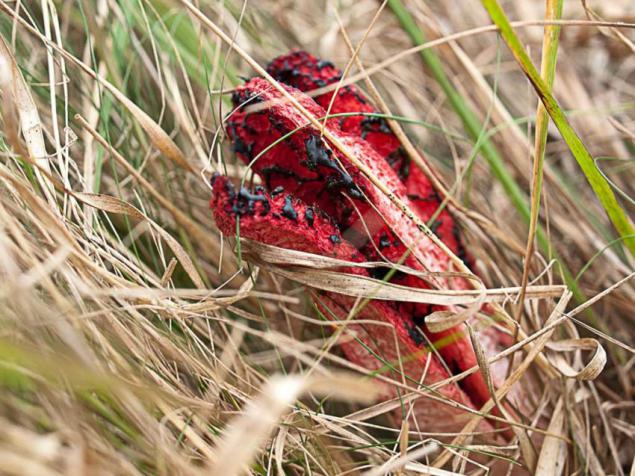
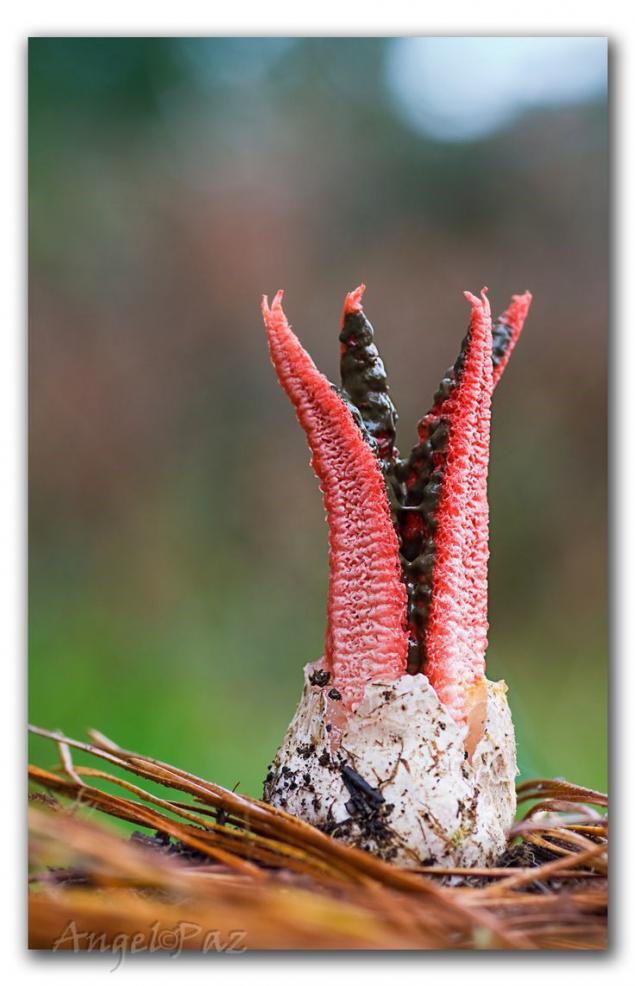
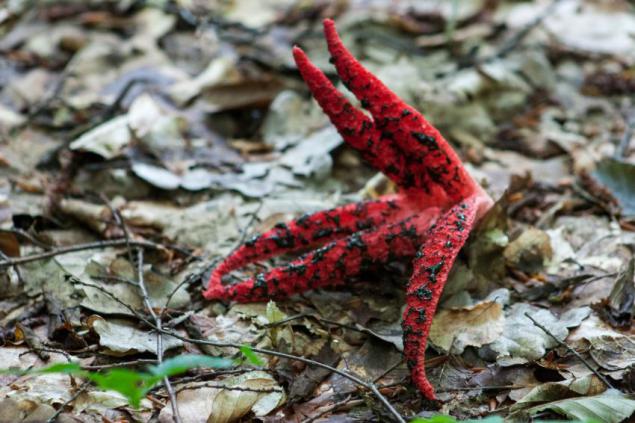
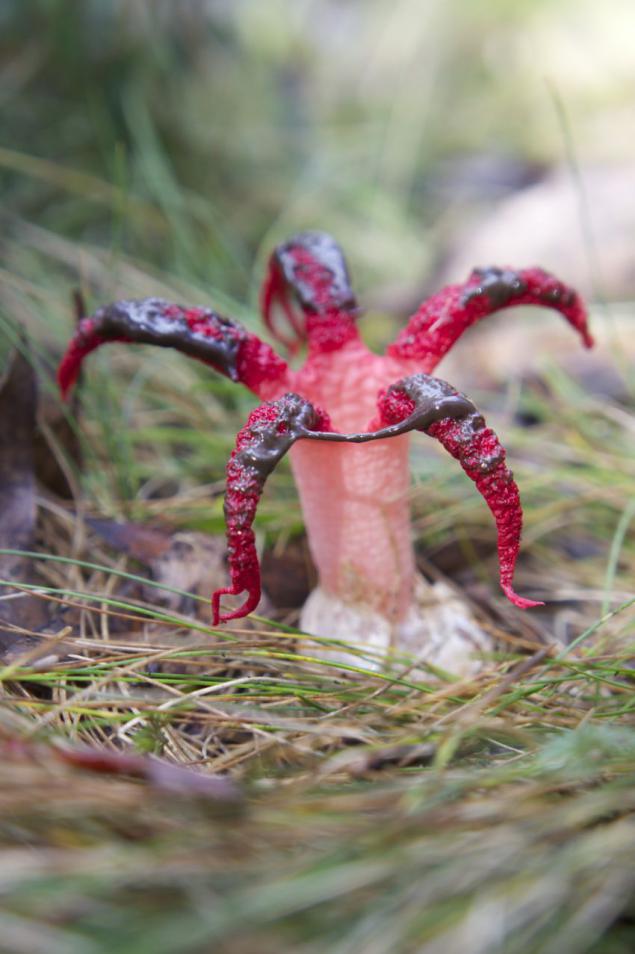
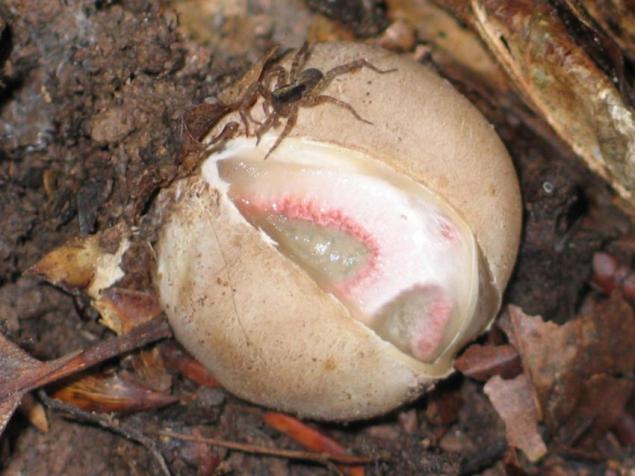
In the picture you see the mushroom itself - Klatrus Archer (Clathrus archeri), and next to the right, such as fungi, but are in the egg stage of which will soon be the new fruiting bodies of fungi.
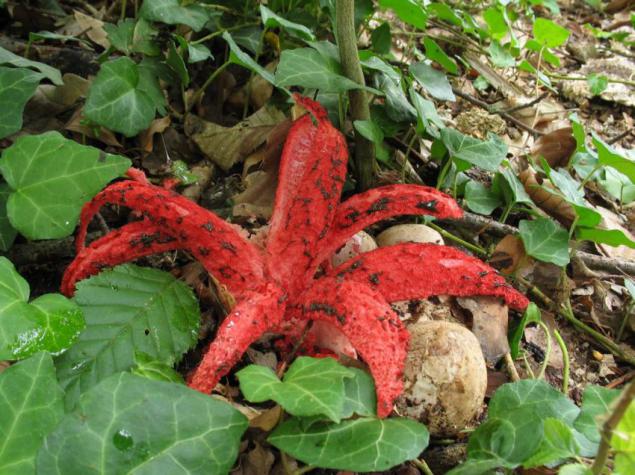
Mixed forest (beech, pine, oak, mountain maple, elm), on the edge of which I noticed a small, Krasnenkoe spot on the ground, in last year's foliage. As it turned out - it peeped "incipiently germinating egg" fungus.,
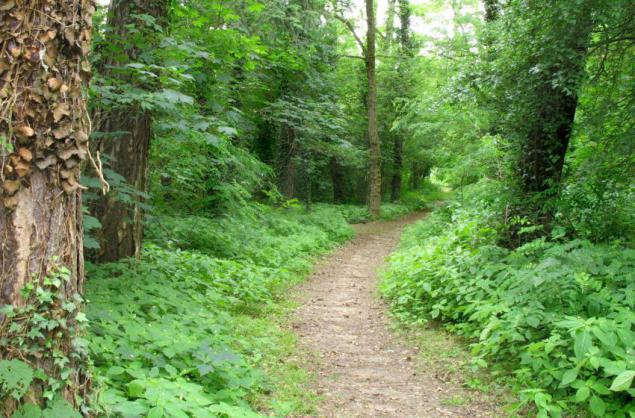
That's how it looks when magnified several times.
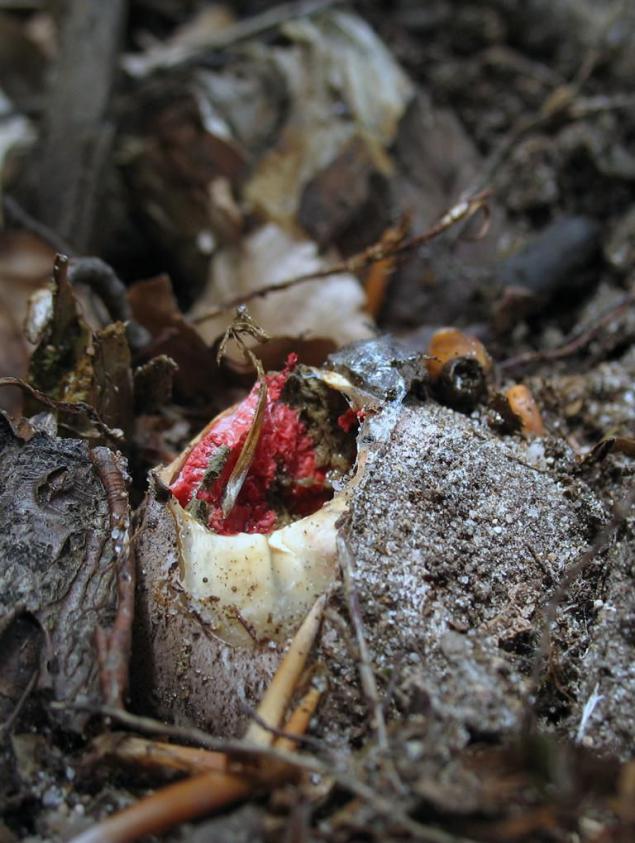
This photo is clearly visible structure of the shell egg on top (peridium) shell, and beneath it a slimy, gelatinous layer under which the blades are viewed reddish future "flower».
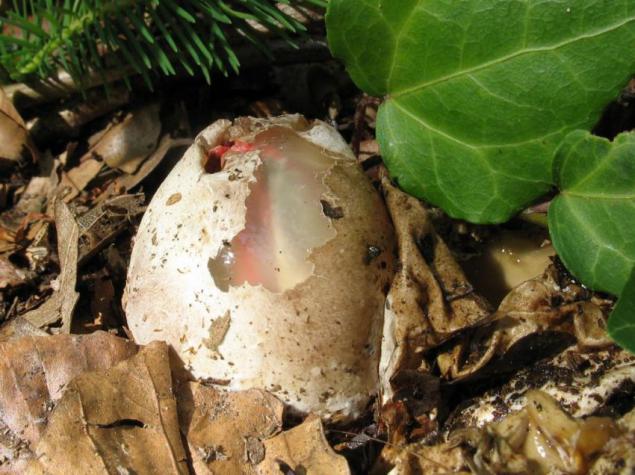
This image of another egg, it was the same (front view at break shell).
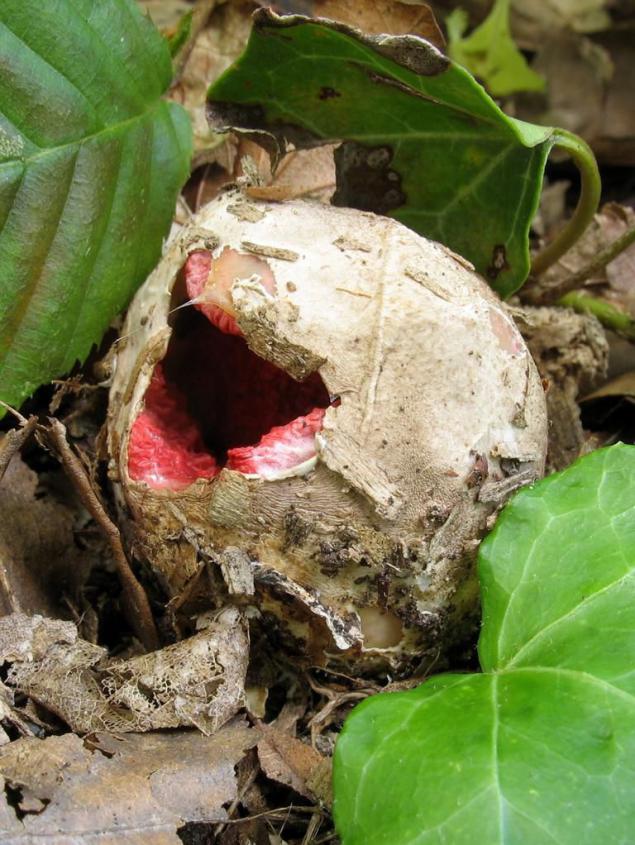
These eggs were dug out some baby animals of the earth, and lay in a radius of one meter. Perhaps dogs because They are indifferent to the different smells, and in particular the smell of this fungus, we can say stinking, filthy, nasty, very nasty to humans. While I was doing a photoshoot, circled around the different flies. Suddenly there were two dogs, which is my right, to the left running up to the mushrooms and eagerly sniffed. Later came the owners of these dogs and I asked them to reason with the ardor of a dog, because they could turn the tripod with the camera or damage the mushrooms. By the way, these people live near the forest, but, as they explained, they see these mushrooms for the first time.
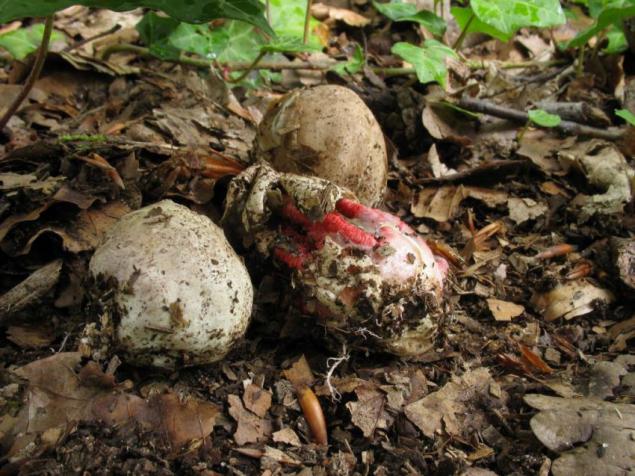
They say: - "Man is born in pain and die in agony." Mushrooms, probably also does not help.
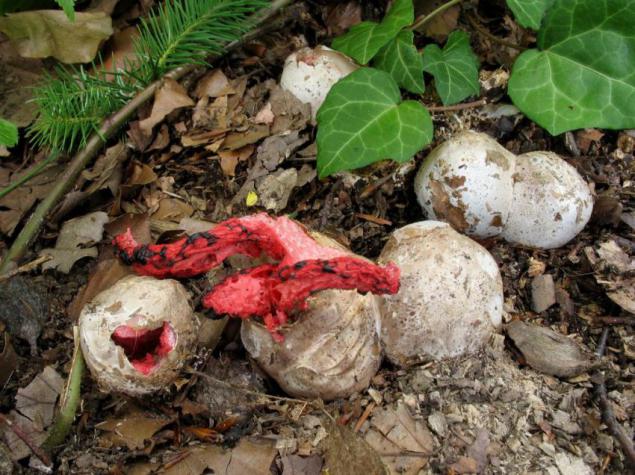
In the photo (foreground) is a cross-sectional view, not yet matured into egg-mushroom stage.
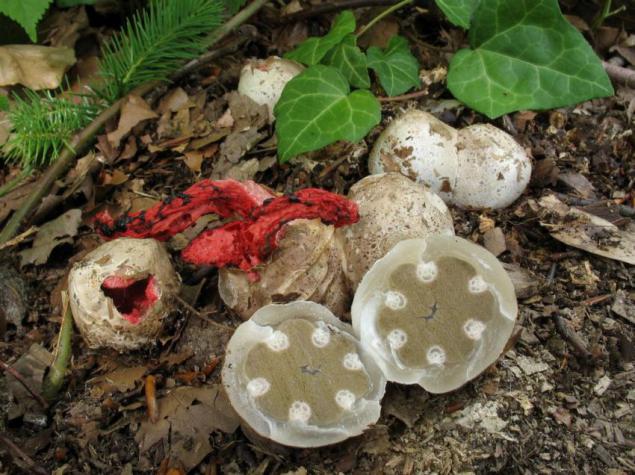
In this photo: (from left), you see a longitudinal section of already matured fungus in the egg stage. There is already clearly visible red tentacles of the future "Cuttlefish»
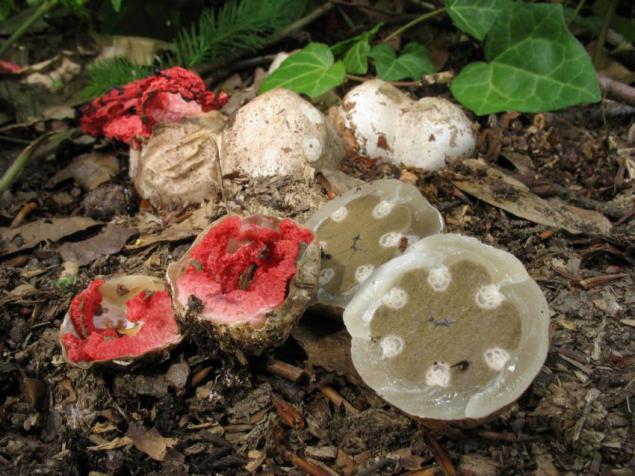
Photo: (right, bottom) - a cross-section is already mature, mushroom egg. In the center is easily visible nucleus consisting of six red blades of the future "flower" and spore-bearing weight of the tobacco color.
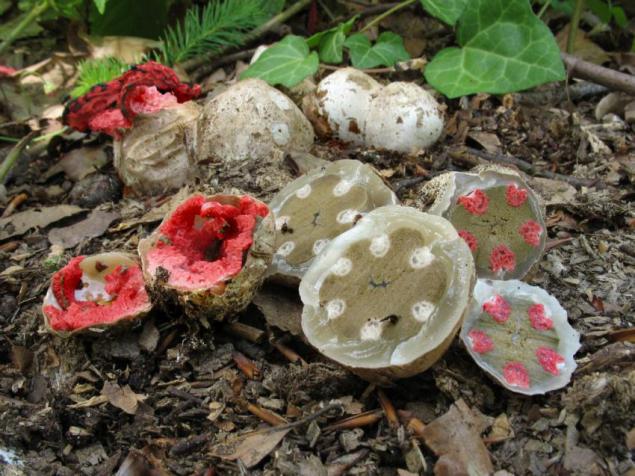
In this photo shows: the outer surface of the blade portion and a young mushroom hollow leg, which has a length of 2 - 5 cm. The length of the blades - 5.8 cm. (Above, it is seen that blade more fused fungus).
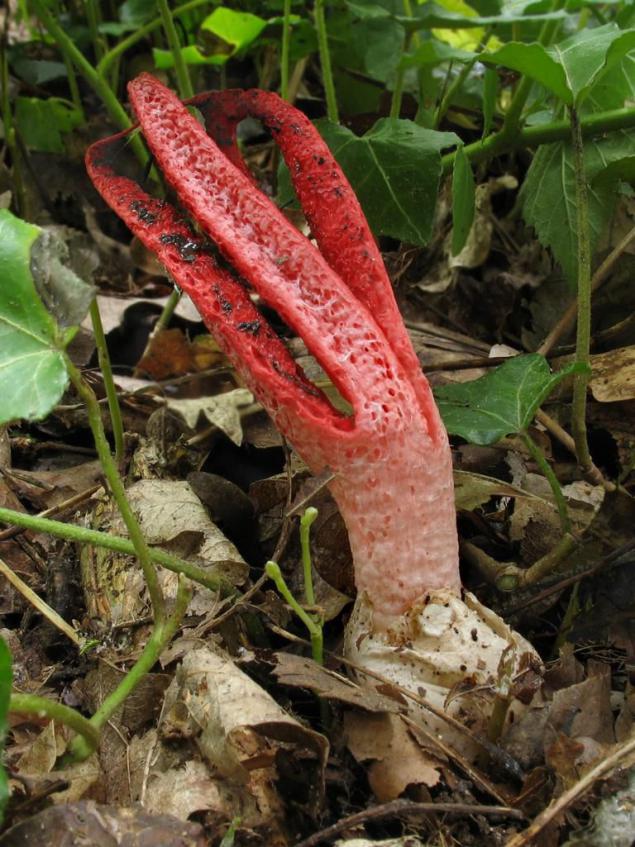
Young fruiting bodies of fungi

Here they are! Already "run" in the woods. :))

Here, at the crossroads of forest paths (pictured below, right), a place chosen by several fungi Klatrus Archer.

In this image, a fungus - in childhood (egg) in adulthood (middle) and fading old age (in the background).
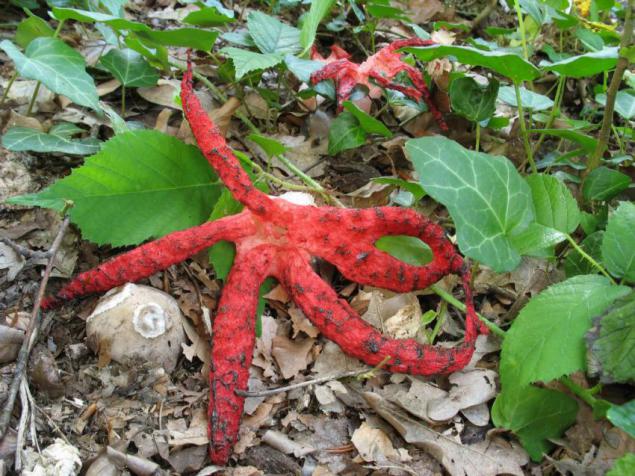
The life of these fruiting bodies, after the release of the egg, is relatively short and, depending on the weather, lasts only two or three days. Then the natural wilting and death. But during this short period, the fungus has time to fully perform their biological function - to give seed for procreation.
